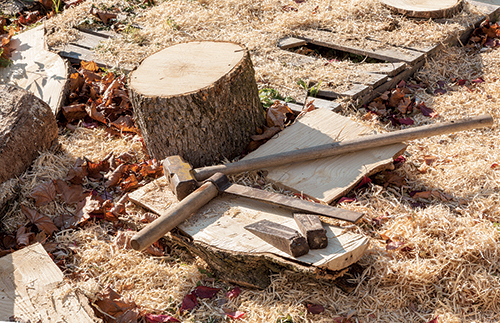
For the purposes of woodworking, is there a difference between wood that is wet and wood that is green? Are dimensional changes the only concern with green wood? – Bob Johnson
Chris Marshall: “Green” wood typically means the lumber has been recently processed from the living tree and is not yet dried, either by air or in a kiln. It may contain twice the wood’s weight in water, so both wood movement and potential decay are issues until it is properly dried. Not only that, but green wood is often wet enough to literally spray water on your tools when you machine it. Who wants that?! I’ve used some green lumber before for the roughest of construction (building theater sets for a local school production – it was donated by a sawmill), and believe you me, that stuff was nowhere near ready for woodworking. Or even construction purposes, for that matter. It twisted, cracked and molded before the drying process finally concluded. On the other hand, “green” blanks for woodturning are a dream! The shavings come off like ribbons, and it turns as easy as butter with sharp tools. But, you should still expect some distortion and even cracking as the bowl or vessel dries.
Tim Inman: This could be a whole “wood technology” course in one question. For the sake of brevity – and with the idea not to give anybody a headache – Yes, there is a difference between “green” wood and “wet” wood. Green wood typically refers to wood that is cut fresh from the growing stages in the tree. It is wood that was quite recently alive. It is certainly wood that has never had the chance to dry out completely, as in firewood or cabinet lumber dry. Wet wood could also be green wood, but usually we refer to wet wood when it is wood that has not been alive recently, and has been given the opportunity to dry out to cabinet or lumber grade moisture content. Green wood contains two kinds of water: water in the cell walls, and water in the cells themselves. Green wood is really wet! Wet wood, or maybe it would be more descriptive to just call it wood that is not completely dried yet, only has moisture in the cell walls. The water inside the cell itself has long since been gone. When this cell wall moisture dries to be in equilibrium with the moisture in the air around it, the cell walls shrink. This is what causes the dimensional changes we see when wood “moves” from being too moist or too dry to the other side of the dark edge. I think one could also make the argument that green wood moisture is also different from simple water, since it does still have some sugars, etc. from the photosynthesis process. This sappy moisture, to me, does make the green wood handle differently than just wet wood. It is more limber and less brittle. Another discussion about the relative merits of kiln drying vs. air drying will certainly follow.





